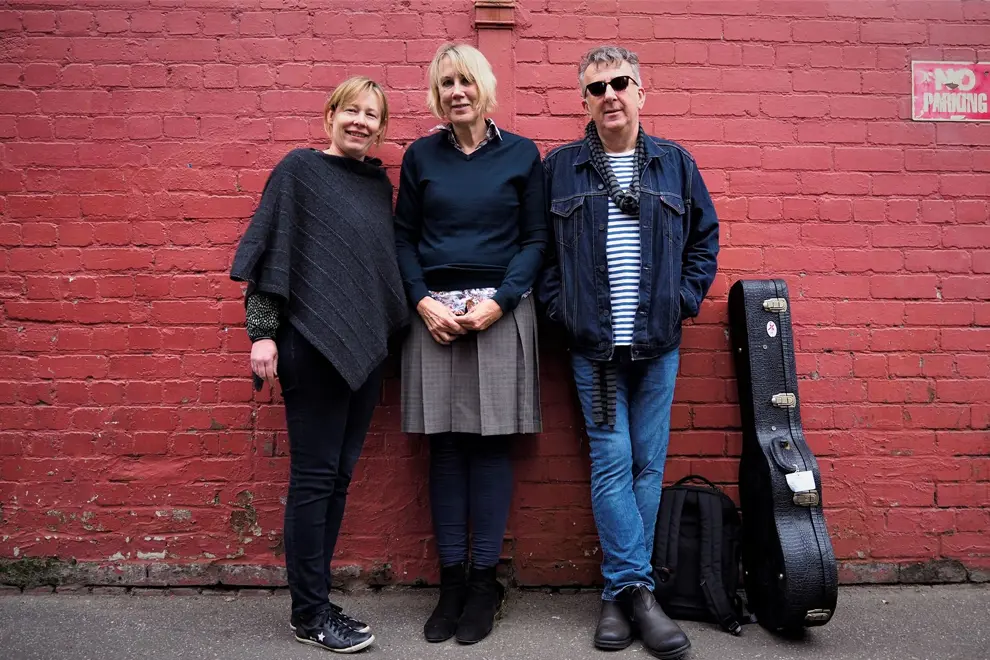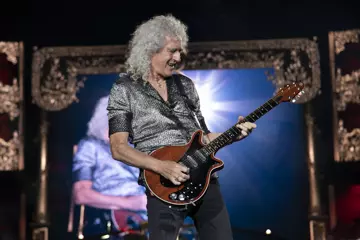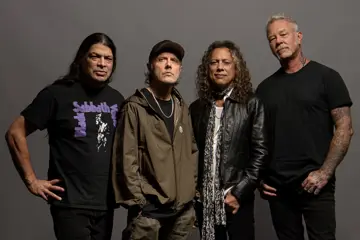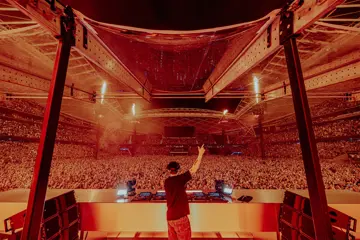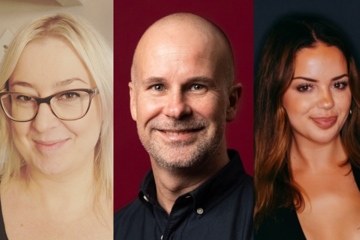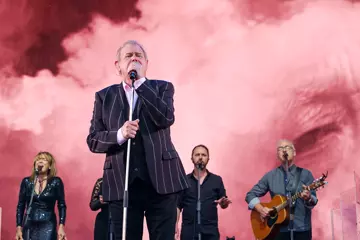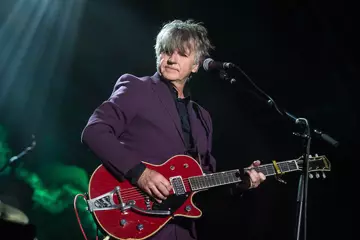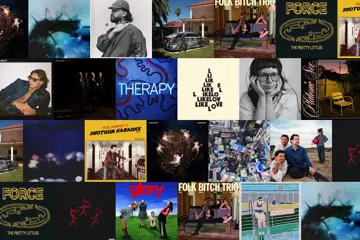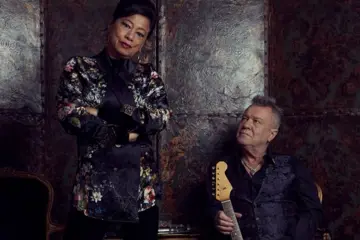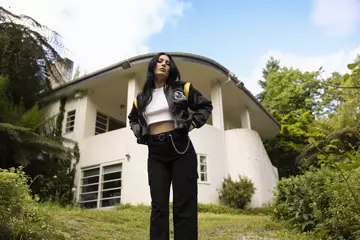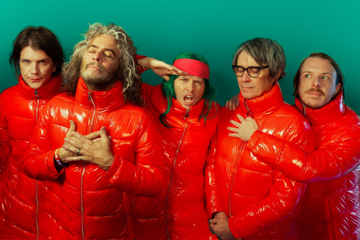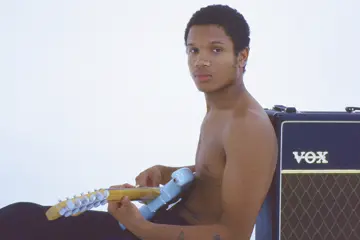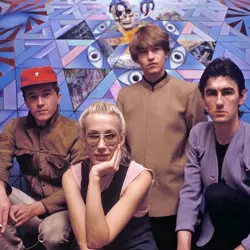 The Go-Betweens
The Go-BetweensBack in 2017, as part of the Queensland Music Festival, Brisbane indie-pop pioneers The Go-Betweens’ beloved 1988 sixth album 16 Lovers Lane was feted at a special QPAC concert, where it was performed in full by a cohort of original band who played on it – Lindy Morrison, Amanda Brown and John Willsteed – augmented by a flotilla of special guest musicians and vocalists.
The triumphant hometown performance was followed by recitals in Melbourne and Sydney which garnered similar acclaim, and now – eight years later – they’re doing it all again in Brisbane, with the same band members now joined by a new assortment of high-profile Queensland-based vocalists.
In a way the narrative of 16 Lovers Lane mirrors the larger story of the band who put it together – criminally-overlooked at the time (16 Lovers Lane would peak at #48 on the Australian albums chart, still The Go-Betweens’ highest placement), it was a record of such timeless nature that it reverberated through the years towards its current accepted status as an Australian classic.
“It’s the album that resonates most with the public,” explains Morrison, the band’s original drummer. “It's the most commercially-produced album, so it pleases the listener's ear far more than their earlier albums would.
Don't miss a beat with our FREE daily newsletter
“The songs are more fully-developed and every song's a gem, but in particular Streets Of Your Town has really resonated with not only Queenslanders, but people throughout Australia, as kind of an iconic tribute to a town.”
“The way that it’s resonated through the years is partly that's due to the production, because you have to remember we recorded it in 1988 and we were very out of fashion with what was happening musically at the time in terms of production,” continues violinist/multi-instrumentalist Brown, who joined the band’s ranks in 1986.
“It was ‘big synth pop kind of epic anthem’ time and we were making this acoustic, natural-sounding record that subsequently has not dated to one particular era – I think you can listen to it now and it still sounds relatively current. So that’s one thing I think that has contributed to its longevity.”
The lead-in to 16 Lovers Lane was a tumultuous time for The Go-Betweens. Having formed in 1977 around the nucleus of complementary singer-songwriters in Robert Forster and Grant McLennan, by the early-‘80s the band had decamped to London to take their music to the wider world.
But due to a combination of bad luck and bad timing the success and adulation they’d envisioned hadn’t been forthcoming, so by 1988 the band had returned to Australia, setting up base in Sydney rather than Brisbane and setting to work on album number six.
The band’s internal structure was inherently complex but even more-so at this juncture: bassist Robert Vickers had declined to return Down Under, replaced in the ranks by new member Wilsteed, while the long-running relationship between Morrison and Forster had recently run its course and left a trail of sadness, and a new love affair between Brown and McLennan was still in its earliest throes ushering in an abundance of happiness and joy.
Whilst somewhat messy on the surface, this tangled scenario would ultimately go a long way towards shaping the beautiful duality of 16 Lovers Lane.
“It was a very bumpy ride for me to come back – I didn't want to come back,” Morrison admits. “And then, of course, we lost Robert Vickers, and that was heartbreaking. We begged him to come back, but he’d made up his mind he wanted to stay in New York.
“For me, it was my first time living in Sydney and that was a huge adaption. I have a lot of remorse about how I spent some of that time: I'll say one word – [riotous venue] The Kardomah [Cafe].”
“That’s two words,” Brown giggles.
“But for Amanda, it was a return to her hometown and everybody loved her so much,” Morrison continues. “She and Grant were now well established as lovers and they set up in Bondi Junction in the cutest house that they were renting, so for her it was a different experience. But I don't want to put a cloud over it, though there’s a song written about those clouds.”
“When you think about it, though, just talking about those two different experiences of moving back, it's sort of emblematic of the album itself,” Brown reflects. “Because Grant's songs are all very positive and optimistic and Robert's songs are all about the end of a relationship and in that way that the whole album has a massive scope.
“That’s why it was set in the fictional ‘Lovers Lane,’ the whole album encapsulates the entire spectrum of a relationship from beginning to end.”
To oversee the album in the studio the band flew in English producer Mark Wallis, who’d recently finished work on Talking Heads’ Naked and U2’s The Joshua Tree – as well as having mixed a couple of tracks on The Go-Betweens’ previous effort Tallulah (1987) – whose commercial ear leant an unabashed pop sheen to 16 Lovers Lane, by far the band’s most accessible album.
“Well, to me [fourth album, 1986’s] Liberty Belle [And The Black Diamond Express] and Tallulah could have been that way too, but the production values were different,” Morrison offers. “Unless we're going to give credit to John Willsteed for laying down some pretty catchy guitar lines?
“I'll tell you, there was a lot of competition in the studio between the men – tons of it. John would come in and say, ‘Well, what have you done?’ to Grant, and Grant would say, ‘Well, I put down a whole bunch of guitars’.
“I remember that well,” Brown chips in.
“But John certainly did bring a whole new level of arranging,” Morrison continues, “and Mark Wallis, the producer, was very good at sorting that out and giving every little melodic motif its moment. We're going to be reproducing that.”
One by-product of Wallis’ approach to the album – which revolved around capturing Forster and McLennan building the bones of each song acoustically and then building upon that structure – was that the rest of the band at times felt that their contributions weren’t given due focus, despite the obviously strong results.
Morrison – who missed some of the recording sessions due to a family emergency – also suffered the indignity faced by so many drummers in the ‘80s of having some of her work replaced by the then-rampant drum machines on a handful of tracks.
“Yes, I felt very badly about being marginalised,” Morrison concedes. “I mean, it was terribly painful at the time, but looking back now I can see what Mark was trying to do: they were trying to turn a little indie-alternative band with an indie-alternative drummer into a commercial band, and he was just going to do whatever it took to do that.
“And when I actually played the drums on tracks like Dive For Your Memory and I'm All Right and some other tracks he's buried it – he's buried the drums, he's put them right back. Why? Perhaps they were too sloppy for him, because when the listener gets used to hearing drums played electronically, then the listener expects that sort of perfect time.”
“I think also he was very in love with the original acoustic demos,” Brown continues. “He wanted to retain the essence of those on the album – and I think he did, though there's a couple of anomalies I guess, like You Can't Say No Forever, which is like quite sort of more rock and electric guitar-based – but in general I think he did succeed in retaining that kind of folky, acoustic singer-songwriter feeling.”
One takeaway from watching the 16 Lovers Lane production back in 2017 was how surreal it must have been for both Morrison and Brown, not only because they were revisiting songs that their younger selves had played on decades before but due to the fact that pretty much every song on 16 Lovers Lane was penned about one or the other of them.
“Well, I was kind of used to it,” Morrison laughs. “If they weren't songs about me, then they were songs about the new person that he had fallen in love with, and there was some snide remarks about me.
“No, for me I'm totally divorced from that emotion because I'm thinking about the beats and trying to present the best performance I possibly can.”
“I do think it was quite surreal and meta,” Brown ponders, “but I kind of also had a similar separation from it in that the goal was really realising the best possible versions of the songs.
“And we knew the lyrics were great – I mean, both writers are known for their lyricism – and so for me, it was about taking that as a given, really, that the lyrics were taken care of and it was our job to enhance the arrangements.
“Looking back I think Robert really hit a lyrical peak on this record. There's so much beautiful imagery, his lyrics are really poetic on this album. Both of the boys were at the top of their game.”
“Grant was absolutely and totally in love with Amanda, also, so his melodies were so beautiful – they really were beautiful,” Morrison offers. “And he was aided by working alongside Amanda, who, for instance, wrote that refrain, ‘Shine,’ in Streets Of Your Town – she came up with that line, which is a bit of a hook. They worked really well in tandem.”
While the six-piece band convened for the 2017 production remains extant, this time around they’ve roped in a different cast of incredible Queensland-bred vocalists – Meg Washington, Patience Hodgson (The Grates), Seja Vogel, Ben Ely (Regurgitator), Jem Cassar-Daley, David McCormack (Custard), Eamon Sandwith (The Chats) and Darren Hanlon – who will each give their own distinct spin to the songs of 16 Lovers Lane, as well as some other classic The Go-Betweens tracks in the back-end of the performance.
Having the array of guest vocalists is chiefly by necessity – Forster has declined to participate in the album reunions (though he gives his complete blessing), while McLennan tragically passed away back in 2006 – but it turns out that the different voices offer fascinating new perspectives on tracks that remain so familiar to so many.
“I think with all the iterations of this show, we've very intentionally gone for people who have a connection to the band or the music,” Brown tells. “And in this case, they're all Queensland-based or of Queensland origin, artists who've all either been influenced by or know The Go-Betweens through some connection, so it all feels very natural.
“It’s definitely true that the different guest artists bring a whole new perspective to the songs, but I think you have that consistency and continuity with the band being the same and the arrangements, so it's sort of a best of both worlds scenario.”
“And we really like the band,” Morrison smiles. “I've been working with Dan Kelly with my current band SnarskiCircusLindyBand, and I've known Danny Widdicombe forever – he's such a lovely, lovely man – and Luke Peacock is wonderful as well. So it's the same band again – thank God, because it's less work!”
“For me, it's like those songs are sort of in my DNA because I learned them all in my early 20s, and it's such a formative time for music,” Brown continues. “I think just generally speaking, it's when people find their music and their subculture and their tribe in a way, and that stays with you through your life.
“And for me, I remember all the parts, but it's just the actual physical [aspect of] getting match-fit enough to play them all in a set, because I don't perform very much anymore. I'm just in the studio all the time, so it's a completely different discipline.”
While 16 Lovers Lane never broke through commercially back in the day, today it’s revered as a classic Aussie album – the respected 2010 book 100 Best Australian Albums placed it at #12, and Rolling Stone’s 2021 list of their 200 Greatest Australian Albums Of All Time placed it at #15 – do Morrison and Brown feel vindicated at all by this critical reappraisal?
“My sister rang me today, because I had to do a 4BC interview yesterday,” Morrison offers, “and she said, ’It's so funny, Lindy, all these people who never knew anything about The Go-Betweens and would have never known their music or anything, they're all saying to me, ‘Oh, Lindy's talking about The Go-Betweens!’ and ‘Aren't The Go-Betweens great!’
“And I think it's just remarkable and just fabulous and I couldn't be happier. Do I feel vindicated? I don't think I feel vindicated because I always knew that we were going to leave a great legacy from the moment I started playing with those two men.
“That started back in Brisbane when I first went to see them – I knew how literary they were, I knew how clever they were. I knew that they were impossibly inexperienced as musicians – as was I – but I could see that, like a theatre group, we could grow together, and that's exactly what happened.
“I knew it didn't matter to me about making money, about getting in the charts, getting anything,” she adds. “I knew that we were going to produce the greatest art, and we did – six fucking great albums!”
“When I joined the band, I observed that sense of confidence,” Brown affirms. “I think Lindy, Grant and Robert – not Robert Vickers as much – but the triumvirate of those three always had that unwavering self-belief in the music. And I mean, let's face it, that's what drives all good art, really.
“None of us – none of us in The Go-Betweens – did it to get rich. We did it because we were just passionate about making good songs, and so I think that's why it's lasted.
“But do I feel vindicated? Well, I don't know, it's not really a financial vindication – it's more just an appreciation – but the nice aspect also is that it seems to resonate really strongly with younger generations, and to me that's a really lovely thing.”
The 16 Lovers Lane performance will take place at the QPAC Concert Hall on Friday, September 26th. Tickets are on sale now.
This piece of content has been assisted by the Australian Government through Music Australia and Creative Australia, its arts funding and advisory body


